I meant are you using casings to attempt to replicate various types of VA’s? Why do other companies have 20 different varieties of VA including empire leaf? Is it just not available for US production?We have a few different lots of Red Virginia leaf, for example the grade that is used in CRF and the 2003 grade that is used for Bijou, as well as one lot of Bright, and two different lots of Orange leaf for flue cured AKA Virginia, leaf. And then one lot each of White Burley, Dark Burley, Perique, Latakia, Basma, Izmir, Katerini, Dominican Cigar, Italian Cigar, US Black Cavendish, Dominican Cigar Cavendish, Dark Fire KY, Light Fire KY, and Kasturi. With these tobaccos, there is a lot of variation and nuance that can be accomplished just by careful blend development, without casing. Casing is just one of many arrows in our quiver, so to speak, and it's one we don't use but in a handful of blends, and one that we use sparingly. I hope that answers your question.
Confused: What Does A Naturally Sweet Virgina Taste Like?
- Thread starter geopiper
- Start date
You are using an out of date browser. It may not display this or other websites correctly.
You should upgrade or use an alternative browser.
You should upgrade or use an alternative browser.
- Status
- Not open for further replies.
I am happy to be of service, and offer my experience and provide information anytime!
Would you be willing to talk about fermentation after tinning? It's something we debate here all the time. For example, does fermentation create gas or does it create a vacuum? C&D and Pease tins tend to puff up over time, whereas Mac Baren and Dunhill tins seem get tighter (or at least don't expand). What's going on inside these tins over time?
Probably has to do with the peel off tins not being vacuum sealed, and the screw ones being stripped of oxygen. A different type of aging process must be occurringWould you be willing to talk about fermentation after tinning? It's something we debate here all the time. For example, does fermentation create gas or does it create a vacuum? C&D and Pease tins tend to puff up over time, whereas Mac Baren and Dunhill tins seem get tighter (or at least don't expand). What's going on inside these tins over time?
Probably has to do with the peel off tins not being vacuum sealed, and the screw ones being stripped of oxygen. A different type of aging process must be occurring
True, but jars aren't vacuum sealed either. So should they expand or get tighter... see the conundrum?
Ah, I see. No, replication of certain leaf isn't the purpose that casings serve. The purpose of casing is to subtly augment the chemistry of certain leaf to mitigate chemical effects like tongue bite or rough edges. Casings can't be used make a Red Virginia taste or look like Bright, or Orange Virginia taste like Red. But it can be used to reduce bite and offer natural nudges to the existing sweetness and flavor profile of the leaf to which it is applied. We don't have 20 grades of Virginia because we are a very small company with limited storage space and we do everything by hand, including our processing, which is enormously time consuming. We have the types of leaf that we need to produce the blends we like and want to make. If we want to make something new and we don't have the necessary leaf, we source it. Very often, there may only be a few thousand pounds of a particular grade or lot available, and if we were a big producer, with large machinery, a few thousand pounds would not go very far, thus requiring several different lots to be purchased, and blending those lots together to reach the desired nicotine and sugar averages for the leaf for the leaf in question. For us a few thousand pounds of any one type of tobacco can last for well more than a year or two, so amassing stockpiles to be blended together isn't necessary for most things.I meant are you using casings to attempt to replicate various types of VA’s? Why do other companies have 20 different varieties of VA including empire leaf? Is it just not available for US production?
We don't have any use for filler grades, and we don't blend using spreadsheets to determine rote chemistry averages of target nicotine and sugar, we source the leaf that has the sugar, nicotine and color that we want and because we don't produce a gazillion pounds of one or five or 15 products at a clip, we don't need 20 different grades of one style of leaf to spread across our blends in order to make our production and chemistry targets. Again, we have less than 20 blends that utilize casing and that includes Burley, Virginia, Oriental and Latakia blends as well as aromatics. We produce hundreds of different products in small batches, usually 56- 80 lbs. at a crack. Each of these blends are made to individual, unique recipes from one another, and are all made using the 20 or so tobaccos of different types that we use. The vast majority of these are uncased and many are not topped either. Adding a small amount of sugar or honey, or molasses won't replicate the flavor of a totally different leaf, it will only adjust the mouthfeel and to a far lesser extent, the flavor of the leaf in question.
Ah, I see. No, replication of certain leaf isn't the purpose that casings serve. The purpose of casing is to subtly augment the chemistry of certain leaf to mitigate chemical effects like tongue bite or rough edges. Casings can't be used make a Red Virginia taste or look like Bright, or Orange Virginia taste like Red. But it can be used to reduce bite and offer natural nudges to the existing sweetness and flavor profile of the leaf to which it is applied. We don't have 20 grades of Virginia because we are a very small company with limited storage space and we do everything by hand, including our processing, which is enormously time consuming. We have the types of leaf that we need to produce the blends we like and want to make. If we want to make something new and we don't have the necessary leaf, we source it. Very often, there may only be a few thousand pounds of a particular grade or lot available, and if we were a big producer, with large machinery, a few thousand pounds would not go very far, thus requiring several different lots to be purchased, and blending those lots together to reach the desired nicotine and sugar averages for the leaf for the leaf in question. For us a few thousand pounds of any one type of tobacco can last for well more than a year or two, so amassing stockpiles to be blended together isn't necessary for most things.
We don't have any use for filler grades, and we don't blend using spreadsheets to determine rote chemistry averages of target nicotine and sugar, we source the leaf that has the sugar, nicotine and color that we want and because we don't produce a gazillion pounds of one or five or 15 products at a clip, we don't need 20 different grades of one style of leaf to spread across our blends in order to make our production and chemistry targets. Again, we have less than 20 blends that utilize casing and that includes Burley, Virginia, Oriental and Latakia blends as well as aromatics. We produce hundreds of different products in small batches, usually 56- 80 lbs. at a crack. Each of these blends are made to individual, unique recipes from one another, and are all made using the 20 or so tobaccos of different types that we use. The vast majority of these are uncased and many are not topped either. Adding a small amount of sugar or honey, or molasses won't replicate the flavor of a totally different leaf, it will only adjust the mouthfeel and to a far lesser extent, the flavor of the leaf in question.
Jeremy,
Thank you for this information.
Can you speak about the current state of Red Virginia? Are top quality sources harder to find or is business same as it ever was? What makes your Small Batch Reds so desirable, in your opinion? Do you currently have any newer crops of red that are "special" or are pickings getting slim?
Thank you!
Interested to hear Jeremy's thoughts on that topic. My guess from a brewer's perspective on fermentation is that when oxygen is left in the tin, aerobic fermentation continues until all of the oxygen is depleted. Sugars are converted into alcohols, which are converted into acetic and other acids while oxygen is still present. Co2 is a byproduct that replaces the oxygen and chokes out/starves the aerobic bugs. After the oxygen is all gone, the aerobic bugs go dormant and the anaerobic bugs wake up. They may continue to produce some Co2 as they munch on the acids and more complex sugars. Secondary anaerobic fermentation can "clean up" residual esters and funky oxidized off flavors from the initial fermentation.True, but jars aren't vacuum sealed either. So should they expand or get tighter... see the conundrum?
In a tin sucked dry of oxygen, no aerobic fermentation occurs, so the anaerobic bacteria have a much more limited diet. I wouldn't even really call what's going on in a vaccum sealed tin "secondary fermentation" as much as just ageing. There are anaerobic bacteria working, but there is no oxygen or Co2 to work in, so the fermentation is happening deep within the cells of the tobacco. Acetobacter can't survive in a vaccum so there's no chance of a blend getting more tangy, but sugars are converting into alcohols and esters, so flavors are certainly changing (through carbonic maceration?) This kind of fermentation in fruit is used to preserve sweetness and fruity flavors and prevent the fruit flavors from flashing off or becoming more caramelized, oxidized, or soured as is typical with aerobic fermentation methods.
In a vaccum, whatever bugs are working are basically starved, so any stray gas in the tin will be scavenged, and over time the vacuum will get tighter. Sometimes there is no stray gas left in the tin in the first place so those tins should stay relatively the same over time.
I think what you've said here is very accurate and explains in a much more authoritative way than I could have, why we use the tin design that we do, and part of why our products tend to ferment more dramatically than those of other pipe tobacco manufacturers. The bulging of tins is a byproduct of the fermentation taking place, resulting from the build up of Co2.Interested to hear Jeremy's thoughts on that topic. My guess from a brewer's perspective on fermentation is that when oxygen is left in the tin, aerobic fermentation continues until all of the oxygen is depleted. Sugars are converted into alcohols, which are converted into acetic and other acids while oxygen is still present. Co2 is a byproduct that replaces the oxygen and chokes out/starves the aerobic bugs. After the oxygen is all gone, the aerobic bugs go dormant and the anaerobic bugs wake up. They may continue to produce some Co2 as they munch on the acids and more complex sugars. Secondary anaerobic fermentation can "clean up" residual esters and funky oxidized off flavors from the initial fermentation.
In a tin sucked dry of oxygen, no aerobic fermentation occurs, so the anaerobic bacteria have a much more limited diet. I wouldn't even really call what's going on in a vaccum sealed tin "secondary fermentation" as much as just ageing. There are anaerobic bacteria working, but there is no oxygen or Co2 to work in, so the fermentation is happening deep within the cells of the tobacco. Acetobacter can't survive in a vaccum so there's no chance of a blend getting more tangy, but sugars are converting into alcohols and esters, so flavors are certainly changing (through carbonic maceration?) This kind of fermentation in fruit is used to preserve sweetness and fruity flavors and prevent the fruit flavors from flashing off or becoming more caramelized, oxidized, or soured as is typical with aerobic fermentation methods.
In a vaccum, whatever bugs are working are basically starved, so any stray gas in the tin will be scavenged, and over time the vacuum will get tighter. Sometimes there is no stray gas left in the tin in the first place so those tins should stay relatively the same over time.
I think what you've said here is very accurate and explains in a much more authoritative way than I could have, why we use the tin design that we do, and part of why our products tend to ferment more dramatically than those of other pipe tobacco manufacturers. The bulging of tins is a byproduct of the fermentation taking place, resulting from the build up of Co2.
Jeremy, thanks for taking the time to offer professional, fact based answers to questions often asked here. Hope you visit more often to offer your expertise. In between, please make another run or two of XX Flake. LOL Love that blend.
I agree, thanks Jeremy. And not that anyone's asking but I'm currently addicted to Pegasus and Burley Flake #3... so thanks for that too 

Since some of the toughest tough guys on the forum are fawning and puckering up for that sweet JR booty, I'll hop in line to give props for Star of the East Gold. Criminally underrated. One of the better medium Balkans on the market, and every bit as magical as any offering from Mr Pease. I'm certain that when a tin of this hits that all-swolt-up point, it'll be a real mind blowing experience.
Don, we do not have difficulty finding the kinds of high quality Virginian leaf we want in the quantities we want. I can tell you that with all tobaccos that we source, sometimes finding it is easy and sometimes it takes several rounds of sampling, but with the US producing millions of pounds of Virginia, I see no reason to worry that Virginia leaf, in all styles, pose a real issue. In the event that we ever find the US market in short supply, Virginia of high quality is produced in many other countries. Our leaf selection process is stringent and we won't use leaf we aren't thrilled with. So far that's not been a danger and I don't anticipate it will be anytime soon.Jeremy,
Thank you for this information.
Can you speak about the current state of Red Virginia? Are top quality sources harder to find or is business same as it ever was? What makes your Small Batch Reds so desirable, in your opinion? Do you currently have any newer crops of red that are "special" or are pickings getting slim?
Thank you!
On the subject of CRF, that leaf is incredibly complex and has nuance and balance that is exceptional. It is a touch sweeter and a touch spicier than the type of leaf we use for the majority of our production and keeping consistent is important. The grade used for CRF is also in shorter supply and to make everything using it would not be possible, but not to have done something with it would have been criminal. Since it was complex enough to require no other component to be interesting and delicious to smoke on its own, we chose to purchase what there was to make a few rounds of CRF, and a small amount of that stock gets used over the course of the year to make Speakeasy as well.
Hope that helps to answer your questions and ease your concerns.
@rushx9 Thank you for the shout out on Star of the East Gold. I love that blend and I am very pleased with how some of the early tins have begun to age! Lotta Bright leaf in that which means high in natural sugar, so yeah, I believe it will ferment beautifully!
Jeremy,Don, we do not have difficulty finding the kinds of high quality Virginian leaf we want in the quantities we want. I can tell you that with all tobaccos that we source, sometimes finding it is easy and sometimes it takes several rounds of sampling, but with the US producing millions of pounds of Virginia, I see no reason to worry that Virginia leaf, in all styles, pose a real issue. In the event that we ever find the US market in short supply, Virginia of high quality is produced in many other countries. Our leaf selection process is stringent and we won't use leaf we aren't thrilled with. So far that's not been a danger and I don't anticipate it will be anytime soon.
On the subject of CRF, that leaf is incredibly complex and has nuance and balance that is exceptional. It is a touch sweeter and a touch spicier than the type of leaf we use for the majority of our production and keeping consistent is important. The grade used for CRF is also in shorter supply and to make everything using it would not be possible, but not to have done something with it would have been criminal. Since it was complex enough to require no other component to be interesting and delicious to smoke on its own, we chose to purchase what there was to make a few rounds of CRF, and a small amount of that stock gets used over the course of the year to make Speakeasy as well.
Hope that helps to answer your questions and ease your concerns.
Thank you for your thoughtful reply, and of course, for the very fine work you are doing.
You are appreciated.
Jeremy,
Thank you for your thoughtful reply, and of course, for the very fine work you are doing.
You are appreciated.
I agree, thanks Jeremy. And not that anyone's asking but I'm currently addicted to Pegasus and Burley Flake #3... so thanks for that too
Jeremy, thanks for taking the time to offer professional, fact based answers to questions often asked here. Hope you visit more often to offer your expertise. In between, please make another run or two of XX Flake. LOL Love that blend.
Thank you guys for the stimulating conversation and for enjoying our products! Happy to be of help, anytime!
Thank you for the detailed answer. I was just curious why some companies feel the need to use so many varieties of leaf and this somewhat explains it. I also meant if it was possible to get two or infinitely different flavor profiles from the same leaf by various casings or processes.Ah, I see. No, replication of certain leaf isn't the purpose that casings serve. The purpose of casing is to subtly augment the chemistry of certain leaf to mitigate chemical effects like tongue bite or rough edges. Casings can't be used make a Red Virginia taste or look like Bright, or Orange Virginia taste like Red. But it can be used to reduce bite and offer natural nudges to the existing sweetness and flavor profile of the leaf to which it is applied. We don't have 20 grades of Virginia because we are a very small company with limited storage space and we do everything by hand, including our processing, which is enormously time consuming. We have the types of leaf that we need to produce the blends we like and want to make. If we want to make something new and we don't have the necessary leaf, we source it. Very often, there may only be a few thousand pounds of a particular grade or lot available, and if we were a big producer, with large machinery, a few thousand pounds would not go very far, thus requiring several different lots to be purchased, and blending those lots together to reach the desired nicotine and sugar averages for the leaf for the leaf in question. For us a few thousand pounds of any one type of tobacco can last for well more than a year or two, so amassing stockpiles to be blended together isn't necessary for most things.
We don't have any use for filler grades, and we don't blend using spreadsheets to determine rote chemistry averages of target nicotine and sugar, we source the leaf that has the sugar, nicotine and color that we want and because we don't produce a gazillion pounds of one or five or 15 products at a clip, we don't need 20 different grades of one style of leaf to spread across our blends in order to make our production and chemistry targets. Again, we have less than 20 blends that utilize casing and that includes Burley, Virginia, Oriental and Latakia blends as well as aromatics. We produce hundreds of different products in small batches, usually 56- 80 lbs. at a crack. Each of these blends are made to individual, unique recipes from one another, and are all made using the 20 or so tobaccos of different types that we use. The vast majority of these are uncased and many are not topped either. Adding a small amount of sugar or honey, or molasses won't replicate the flavor of a totally different leaf, it will only adjust the mouthfeel and to a far lesser extent, the flavor of the leaf in question.
Yeah it's a great thread, and always a treat to get a pro in here.
You are most welcome. As I mentioned earlier, generally, casing is designed to be subtle and is usually not intended to significantly change the flavor of the leaf being cased. However, sure, you could apply a very complex casing that would make a bigger impact on the flavor. I think some manufacturers have essentially done that very thing to create their signature house flavor and aroma across all their blends. But it is still relatively subtle, so subtle that the smoker may believe that signature house aroma and flavor are resulting from the tobacco, rather than an additive. Steaming, stoving, pressing, aging, topping, are all other processes that can change the flavor profile of tobacco. The degree to which they are applied will affect the degree of impact they make on the smoke.Thank you for the detailed answer. I was just curious why some companies feel the need to use so many varieties of leaf and this somewhat explains it. I also meant if it was possible to get two or infinitely different flavor profiles from the same leaf by various casings or processes.
thanks again man for the answer. Makes sense completely!You are most welcome. As I mentioned earlier, generally, casing is designed to be subtle and is usually not intended to significantly change the flavor of the leaf being cased. However, sure, you could apply a very complex casing that would make a bigger impact on the flavor. I think some manufacturers have essentially done that very thing to create their signature house flavor and aroma across all their blends. But it is still relatively subtle, so subtle that the smoker may believe that signature house aroma and flavor are resulting from the tobacco, rather than an additive. Steaming, stoving, pressing, aging, topping, are all other processes that can change the flavor profile of tobacco. The degree to which they are applied will affect the degree of impact they make on the smoke.
- Status
- Not open for further replies.



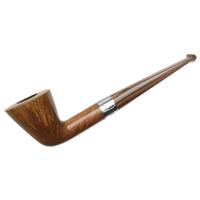
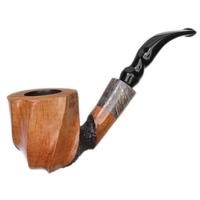
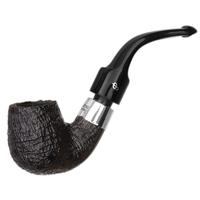
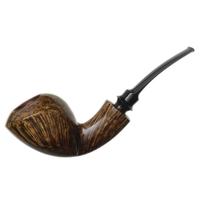
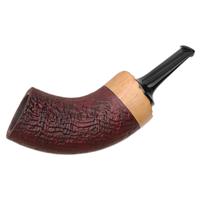





.gif)